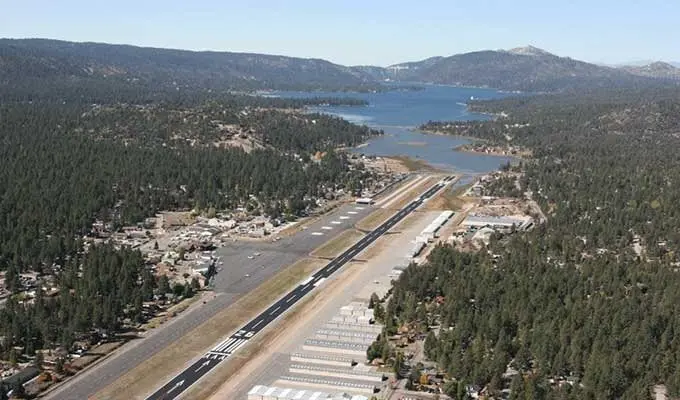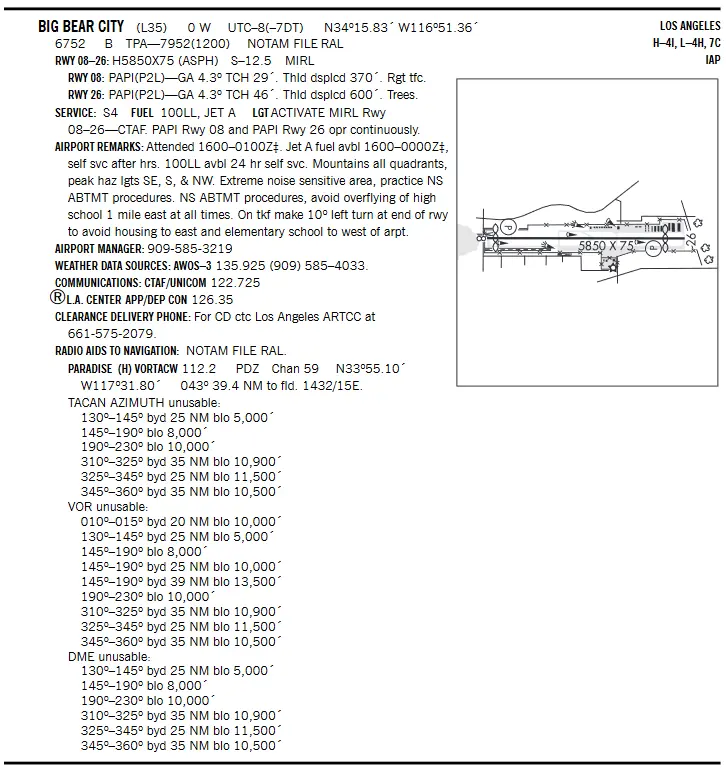
Nestled in the San Bernardino mountain range, Big Bear Airport is the quickest destination for a mountain getaway. It’s the primary airport for those flying into the resorts of Big Bear Lake. Snow Summit, Bear Mountain and other destinations are just minutes away—which means it’s always a good time to visit. Images of shushing down steep mountain slopes on skis, hooking a 2-pound trout on Big Bear Lake; hiking scenic sections of the famous Pacific Crest Trail; or staying at a rustic cabin with a crackling fireplace, surrounded by pine trees. These are the rewards of pilots successfully navigating into this high-altitude valley.
This mountain airstrip is 6,750′ above sea level (second highest in California) with pattern altitude at 8,000′ MSL (1,250) above ground level), so your aircraft performance should be figured using the corrected ‘density altitude’ numbers; many mishaps are caused by not leaning your mixture for best performance before takeoff, overloading the craft on a warm summer day, or miscalculating how many feet of runway will be used before your plane becomes airborne.
For noise abatement and safety, arrivals should remain at 9,500 feet above the ridge south of the lake and city before entering the pattern on a 45-degree angle and turning downwind. When you depart in either direction you should turn left 10 degrees to avoid residential areas and schools.
Big Bear offers unparalleled beauty alongside a challenging operating environment. If you don’t have high altitude or mountain Flying Lessons Los Angeles, we recommend working with an instructor or, at minimum, an experienced pilot, to familiarize yourself with the hazards associated with operating at high density altitude airports.




Venturing to Big Bear from Van Nuys is a relatively easy task. Depending on weather conditions, there’s a couple of different routes pilots can take. The most direct is an easterly departure over the 101 through the Burbank Charlie and via El Monte (KEMT), Ontario (KONT), San Bernardino (KSBD), and then over the dam (the westernmost tip of Big Bear Lake). The alternative route has you departing Van Nuys to the north, through the Newhall Pass (directly north of KVNY), then via Agua Dulce (L70), then directly east towards Victorville (KVCV), then flying past Big Bear Lake to the east before turning back and approaching from the west. Just make sure you’re mindful of terrain clearance altitudes and evaluate weather conditions around Big Bear. Orographic lifting can create weather/clouds in the area.